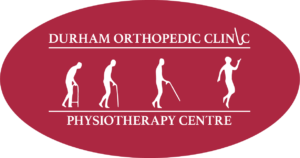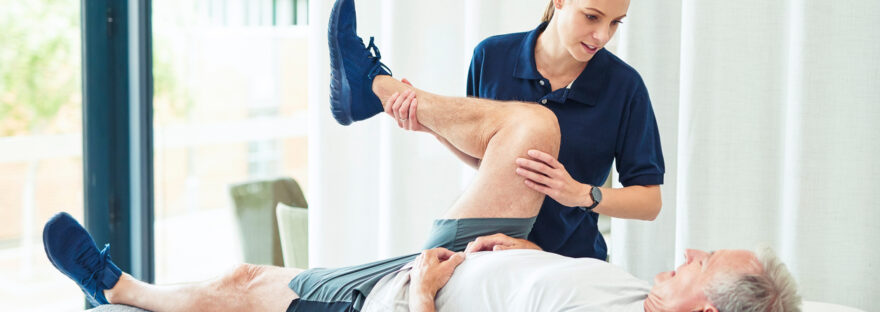As the days grow shorter and temperatures begin to drop, many of us start looking forward to winter sports like skiing, snowboarding, and ice skating. While these activities bring excitement, they also come with a higher risk of injury, especially for those who haven’t maintained a consistent fitness routine through the summer. Fall is the perfect time to prepare your body for the upcoming season, and physiotherapy can be a key part of that preparation.
Build Core Strength
Your core muscles (abdominals, lower back, and glutes) play a critical role in maintaining balance and control during winter sports. Whether you’re carving down a ski slope or gliding across the ice, a strong core helps stabilize your movements and prevents falls.
Fall Physiotherapy Tip: Incorporate exercises like planks, bridges, and Russian twists into your routine to improve core strength. A physiotherapist can design a personalized program to target weak areas while ensuring proper form to avoid injury.
Improve Joint Stability and Mobility
Winter sports involve a lot of quick turns, jumps, and movements that put strain on the joints, especially the knees and ankles. Lack of joint stability can lead to injuries like sprains, strains, or even ACL tears.
Fall Physiotherapy Tip: Work on improving mobility and stability in your lower body. Physiotherapists often recommend exercises like single-leg balances, lunges, and resistance band work to strengthen muscles around the knees, ankles and hips. These exercises help build stability and increase range of motion, making your joints more resilient.
Focus on Flexibility
Flexibility is key for preventing injuries in any sport. Tight muscles limit your range of motion, increasing the risk of strains or sprains during winter activities. Stretching regularly can help maintain or improve flexibility, which is especially important after a summer of potentially less-active routines.
Fall Physiotherapy Tip: Stretch daily, focusing on the major muscle groups that winter sports target—hamstrings, quads, calves, and lower back. Your physiotherapist can recommend dynamic stretches that mimic the motions of your chosen winter sport to ensure optimal performance.
Strengthen the Lower Body
Your legs are doing most of the heavy lifting in winter sports like skiing and snowboarding. Strengthening your lower body, especially the quadriceps, hamstrings, and glutes, is vital for powerful movements and endurance.
Fall Physiotherapy Tip: Incorporate squats, leg presses, and step-ups into your workout routine. If you’re prone to knee pain or other joint issues, a physiotherapist can provide guidance on the best exercises to perform safely and effectively.
Boost Cardiovascular Fitness
Winter sports can be quite demanding on your cardiovascular system, and if you’re not used to sustained physical activity, fatigue can set in quickly, leading to poor form and increased injury risk.
Fall Physiotherapy Tip: Start incorporating aerobic exercises into your routine like running, cycling, or rowing. If you have pre-existing conditions or are recovering from injury, your physiotherapist can recommend low-impact activities to gradually build your endurance while protecting vulnerable areas.
Injury Prevention and Recovery
Even with the best preparation, injuries can happen. Fall is an excellent time to address any lingering pain or weaknesses from the past season. Early treatment can prevent these minor issues from becoming major problems once the winter sports season starts.
Fall Physiotherapy Tip: If you’ve experienced an injury in the past, consult with your physiotherapist before the winter sports season. They can help you address specific weaknesses, design a rehabilitation plan, and teach you proper movement techniques to avoid re-injury.
Don’t Forget Balance Training
Balance is crucial for winter sports, especially when you’re on unstable surfaces like snow or ice. Poor balance increases your risk of falls and injuries. Improving balance now will help you stay upright and in control during your favorite winter activities.
Fall Physiotherapy Tip: Exercises like single-leg stands, using balance boards, or working with stability balls can dramatically improve your coordination and body control. A physiotherapist can create a balance training program that progressively challenges you as your skills improve.
Wrap-Up: Start Early for a Safe and Enjoyable Season
The key to a successful winter sports season is preparation, and fall is the ideal time to start. By incorporating physiotherapy into your routine, you’ll enhance your strength, flexibility, and endurance, reducing your risk of injury and improving your performance.
If you’re unsure where to start or need help addressing specific concerns, consult with our physiotherapists by calling 905-428-7800. They can create a tailored program that gets your body winter-sport ready, ensuring you hit the slopes or ice in top condition. After all, the better prepared you are, the more fun you’ll have!








